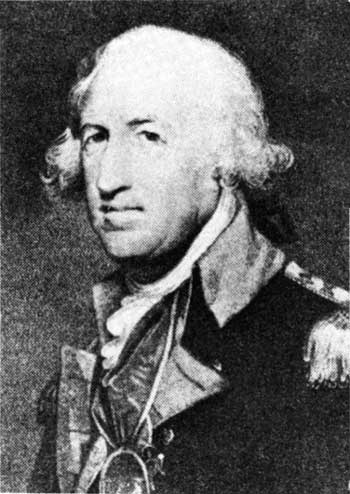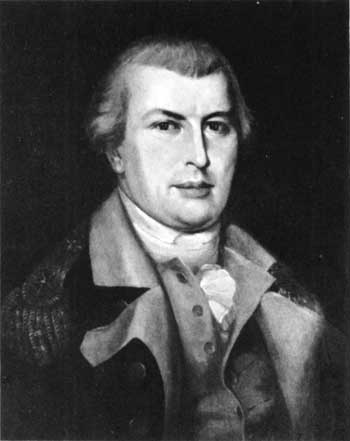|
GUILFORD COURTHOUSE National Military Park |
 |

Maj. Gen. Horatio Gates, American Commander in the
South during most of 1780.
Courtesy Emmet Collection, New York,
Public Library.
Battle of Kings Mountain
Ferguson's advance aroused the back-country mountaineers, hitherto not particularly concerned with the war. Separated by time and distance from the more thickly populated coastal plains, these settlers had their own problems and their own troubles—notably the Indians. Ferguson's appearance in their own region was, however, of vital concern to them. They forthwith assembled in small bodies, each under its own leader, for the purpose of repelling the invasion. Eventually, about 2,000 of them gathered from the frontiers of the four southernmost States and at once set out in pursuit of the invader who had learned of the gathering and had turned toward Charlotte. Ferguson took position on Kings Mountain to await reinforcements and there was discovered and immediately attacked by about 1,000 backwoodsmen on October 7.

Maj. Gen. Nathanael Greene, American Commander
in the South during 1780—81.
After a painting by Charles
Willson Peale. Independence National Historical Park
Collection.
The position Ferguson chose for his stand was almost ideally suited to the type of fighting at which his adversaries were most adept. As a result, at the end of approximately an hour Ferguson was dead, about 400 of his men were slain, and more than 700 captured. On learning the news of this disaster, Cornwallis fell back from Charlotte to Winnsborough to await reinforcements.

|
|
Last Modified: Mon, Dec 2 2002 10:00:00 am PDT |


